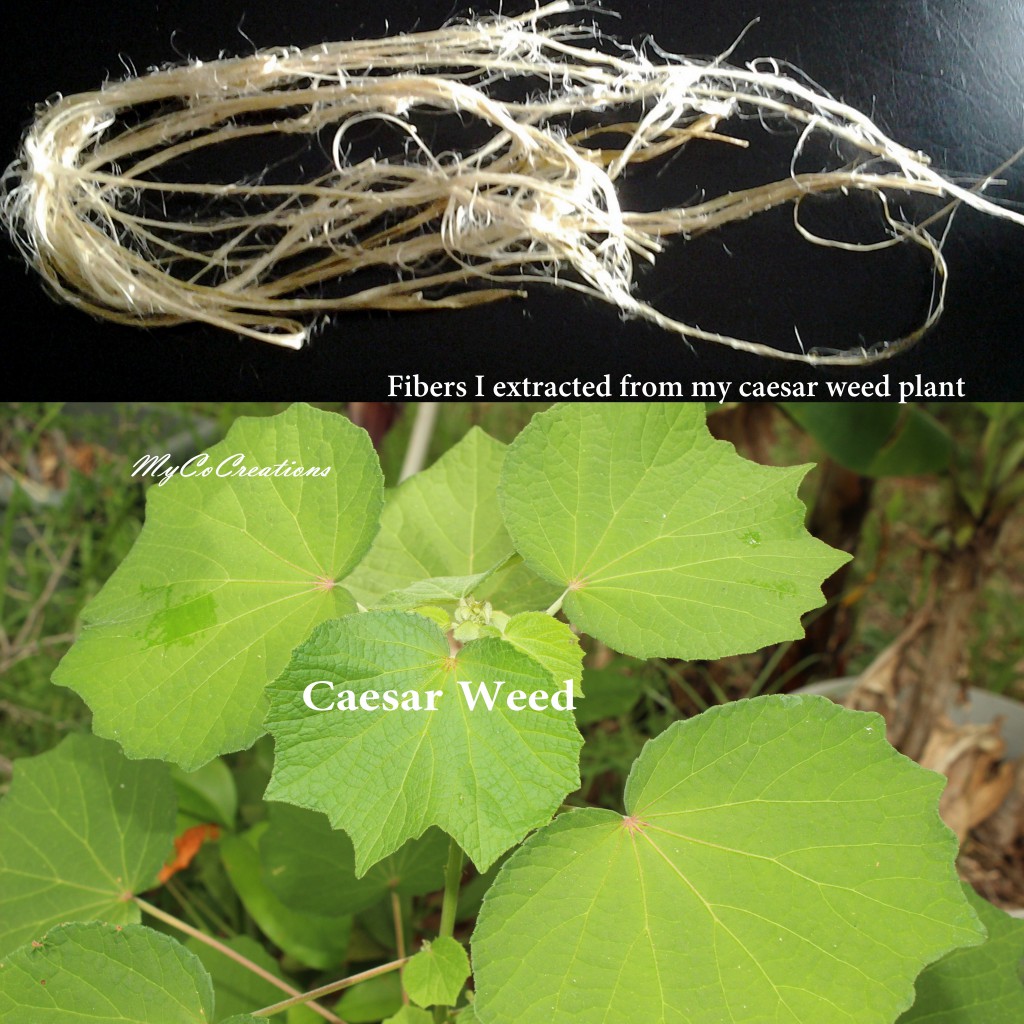Caesar weed : More than just a weed!

First of all, I’d like to say HI! to everyone. I haven’t been posting much as of late, life took a few left turns but now I am back and ready to share a bit on a topic that I am very passionate about. Plants, because THE SEEDS YOU SOW ARE SO MUCH MORE THAN YOU KNOW.
So, I’ve decided to do a series on how plants provide so much more than just food and medicine!
Before I jump right in I first wanted to share that thanks to the great program offered by Awakened Vitality, I am now a certified professional herbalist! I am a lifelong learner that has always been interested in plants and I am forever finding new ones that inspire and reinvigorate me. The last few years I have been on a mission to add to my garden, which I am now referring to as a food forest, plants that provide more than just food and medicine. I have learned quite a bit since I started this journey that I have decided to start sharing that info with you.
I know some of you are wondering what is a food forest or why I am calling it that. Well a garden is a well-maintained space that needs a lot of input and contains a few levels of growings. A food forest is self-sustainable, just like a forest, it doesn’t require daily watering or fertilization or lots of outside input to keep it going. Although I am not 100% there yet, I am well on my way. My food forest contains several levels of edibles and almost maintains itself. I will write another post in the near future giving a lot more details, pictures and may even a video or two.
With that being said, this week I am highlighting a so-called invasive “weed” called caesar weed. The funny thing is that I made a statement a few years ago that I wanted to start growing more plants which provide fiber to assist me on my path to self-sufficiency. This plant that happily volunteered itself in my yard is a plant that can be turned into rope, baskets, and so much more. How cool is that!
Ok so now you are saying, “how do you get fiber from a plant that looks like that”. Cotton and hemp are by far the most used and well-known plants that provide fiber. Caesar weed is one of the lesser known plants that fiber can be extracted from. Generally, these plants grow tall, so they don’t require a lot of space and provide a good amount of shade due to the size of the leaves, so that means you can grow a plant that doesn’t require much sun directly below them! They grow very quickly as well. The picture above shows the amount of fiber I was able to extract from 1 plant that grew in one season.
After allowing the plant to reach a nice height, I cut mine down after they flowered and produced seeds so that I could use the seeds for the next season. I cut the stalks of the caesar weed into 5-6″ pieces. I choose this length due to the container that I used to process them. The process I used to extract the fiber is called “water retting”. It sounds a lot more difficult than it is. You simply soak the stalks in water for approximately 7-14 days. During this time the water is absorbed into the fibrous outer layer of the stalks and allows it to be separated from the rest of the stalk. After soaking for 7 days I checked them by sliding my hand over the stalk to see if any fiber separated, it wasn’t until about the 14th day that it came off very easily. I repeated this process for all the pieces and gathered up all the fibers that I extract, gave them a good wash with soap and water and allowed them to air dry. That’s it! My fiber is ready to be used.
Since this plant volunteered itself I didn’t have a whole lot of fiber to work with but I will be planting my seeds next year and next year’s harvest I will create something from it.
Some of the things you can create with the fibers are rope, baskets, they are great for trellising plants, hair for a doll and so much more.
I hope you injoyed this post and look forward to the next one!





flyTie
This is great! Thanks for sharing the info., and congratulations on becoming a certified professional herbalist! 🙂 It’s definitely fitting for your interests and all of the information that you put out on a consistent and regular basis.
I really like the idea of using the fibers from the plant above to make baskets!
mycoadmin
Thank you @flyTie I really appreciate you taking the time to read. I am excited to share more about all that plants have to offer us!
Hakim
Thank you that was very informative. I am going to search my yard again for more plants.
mycoadmin
You’re welcome @Hakim! Thank you for reading it 🙂 I plan to share many plants like this in the near future.
Sherrice
Great post! And thanks for the shout out!
mycoadmin
You’re welcome and Thank you! 🙂
sherry
Very good info – love the encouragement to explore more!
mycoadmin
I am happy to share and encourage! Thanks for taking the time to read about my experience.
Dean Brown
This is amazing. I am learning so much from the organic farming community and was drawn to the title of your piece. Stuff like this has inspired me to become more of a maker. It is invigorating!
mycoadmin
🙂 Thank you for your feedback! I am glad the title grabbed you enough to come on over and find out more. I can’t wait to introduce you all to the next plant in this series!